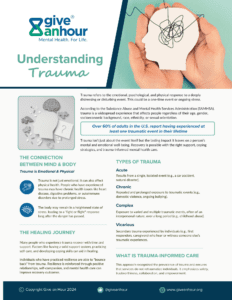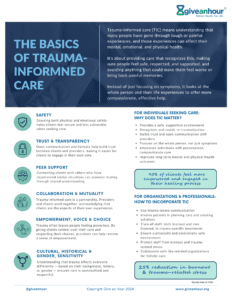With World Trauma Day approaching on October 17, we are taking a moment to reflect on how trauma impacts our lives and the care we provide to those around us. Whether it’s from an accident, abuse, or the loss of a loved one, trauma can leave lasting effects on a person’s mental, emotional, and physical health. Trauma-informed care is a response to this, offering a way for professionals to recognize and address the underlying trauma that may shape a person’s well-being.
So, what exactly is trauma-informed care? At its core, it’s about understanding that trauma is far more common than we may think and that it deeply affects how people interact with health care. This approach ensures that care providers see the whole person, not just their symptoms, and provide care with sensitivity to past experiences. It’s about allowing space for healing and avoiding practices that might unintentionally cause harm or retraumatize clients.
Why Trauma-Informed Care Matters
 Trauma-informed care isn’t just a buzzword — it’s a vital approach to health care that can significantly improve outcomes. When care providers understand trauma, they can create an environment where clients feel safe and supported. This, in turn, can help patients feel more comfortable seeking care, adhering to treatments, and ultimately improving their health.
Trauma-informed care isn’t just a buzzword — it’s a vital approach to health care that can significantly improve outcomes. When care providers understand trauma, they can create an environment where clients feel safe and supported. This, in turn, can help patients feel more comfortable seeking care, adhering to treatments, and ultimately improving their health.
Imagine someone with a history of trauma feeling anxious in a clinical setting. Without trauma-informed practices, that anxiety might worsen, leading to distrust or avoidance of necessary care. But by recognizing trauma’s impact and taking steps to make the clients feel heard and understood, health care providers can improve engagement and trust. The result? Better care for the patient, and less stress for the provider.
Trauma-informed care also supports the well-being of health care professionals. Providers who constantly witness or hear about trauma can experience vicarious trauma themselves, leading to burnout. By adopting trauma-informed practices, organizations create a healthier work environment for both clients and staff.
 The Core Principles of Trauma-Informed Care
The Core Principles of Trauma-Informed Care
There are several guiding principles that make trauma-informed care effective (outlined by SAMHSA):
- Safety: Ensuring both physical and emotional safety helps clients feel secure and less vulnerable when seeking care.
- Trustworthiness and Transparency: Open communication and honesty help build trust between clients and providers, making it easier for clients to engage in their own care.
- Peer Support: Connecting clients with others who have experienced similar situations can promote healing through shared understanding.
- Collaboration and Mutuality: Trauma-informed care is a partnership. Providers and clients work together, acknowledging that clients are the experts of their own experiences.
- Empowerment, Voice, and Choice: Trauma often leaves people feeling powerless. By giving clients control over their care and respecting their choices, providers can help restore a sense of empowerment.
- Cultural, Historical, and Gender Sensitivity: Understanding that trauma affects everyone differently — based on their background, history, or gender — ensures care is personalized and respectful.
The Bigger Picture
Beyond improving the clients experience, trauma-informed care has a ripple effect. When people feel safer and more understood in medical settings, they’re more likely to seek help earlier, follow through with treatments, and even avoid costly emergency care in the future. Ultimately, trauma-informed care isn’t just about providing better care in the moment — it’s about creating a more compassionate, understanding system that helps people heal on multiple levels. And that’s something we can all benefit from.

Kristin Richardson, Director at Give an Hour




